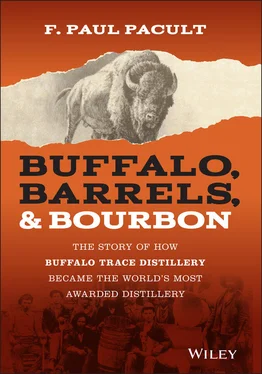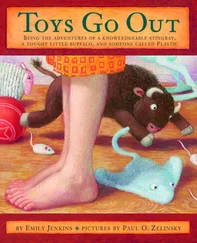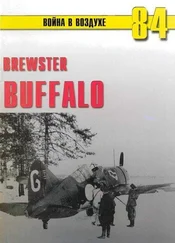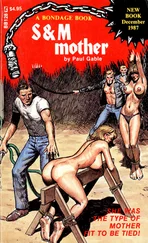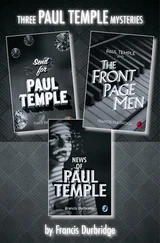James Needham unfortunately came to a horrific end at the hands of a tribal warrior and guide called Occhonechee Indian John, “… a fatt thick bluff faced fellow …” who reportedly first shot Needham “… neare ye burr of ye eare …” after a heated, day-long disagreement. He then hacked open Needham's chest with a tomahawk, ripped out his heart, and held it aloft for all his companions to see. Wood's account of James Needham's death reported, “… ye Tomahittans started to rescue Needham but Indian John was too quick for them, soe died the heroyick English man.”
Arthur barely survived the violence, ending up first as a captive but later as a trusted companion of the tribal chief of the native band referred to by Wood as Tomahittans, more commonly known as Cherokees. After being wounded in the arm from an arrow, taking part in war party raids on Spanish settlements in Florida, and marrying a Tomahittan woman named Hannah Rebecca Nikitie, Gabriel Arthur eventually returned to Fort Henry on June 18, 1674, after roving back and forth through what is now Kentucky, Alabama, Georgia, Florida, and Tennessee over the course of nearly two nerve-racking years. Abraham Wood's commercial ambitions in the frontier ceased with James Needham's demise and Gabriel Arthur's final return. 3
Yet even facing such horrors, exploratory penetrations into the western frontier continued unabated and were often underwritten by companies like the Ohio Company of Virginia, the Illinois and Wabash Land Company, and the Ohio Land Company. 4 The explorers, surveyors, traders, trappers, blacksmiths, carpenters, and hunters of the pre–American Revolutionary War period who journeyed westward over the crags of the Blue Ridge and Appalachian mountain chains to trek into the inhospitable environs of the Ohio River Valley were intrepid, rugged, and determined individuals. A substantial number of the adventurers who ventured into this desolate region in the seventeenth and eighteenth centuries were never seen or heard from again. Others, either broken in spirit or maimed by bear claw or arrowhead or copperhead snake, returned chastened to the safety of the 13 Atlantic coast-hugging American colonies that were by the 1760s ruled by King George III, monarch of Great Britain. Their quests and dreams, as documented by volumes of existing accounts, often ended in defeat, ill health, or financial ruin. The taverns of Philadelphia, the beer halls of Boston, and the inns of Richmond served as the theatres in which the defeated travelers recounted their bedeviled wanderings. They spun bone-chilling tales of starvation, of lost fingers and toes to frostbite, of impenetrable forests, of lethal midnight attacks by panthers or feral pigs and, most frightening of all, their gruesome encounters with hunting and war parties of native tribes. Such was the misfortune for some after being subdued by the harsh rigors of the unforgiving western wilderness.
By stark contrast, the more successful returning wayfarers from the frontier came back to the colonies in triumph, brandishing bundles of animal pelts, the scars of hair-raising escapades, and unbridled hubris. With infectious gusto, they reported to mesmerized colonial audiences about a limitless, fertile, Garden of Eden–like paradise that, yes, tested any sane person's deepest inner resources and nerve, but likewise offered to those blessed with a surfeit of mettle the potential reward of witnessing virgin, uncharted lands on which to hunt and fish and perhaps, in time, to cultivate and settle. One later report carried by the Courier Journal of Louisville on September 9, 1888, that focused on the escapades of one family, the McAfee clan, stated, “The glowing description given of the country beyond the mountains, by Dr. [Thomas] Walker and other adventurous spirits, inspired the younger members of the [McAfee] family with enthusiasm and a burning desire to visit it and judge of its beauties for themselves.” 5 The McAfee explorations would, as we shall see, prove to be of key importance to our story.
After a century (1670–1770) of steady immigration from Europe and the subsequent development of quiet hamlets into bustling towns, many mid-eighteenth-century citizens of the British Crown thought the King's most prized colonies had become too crowded and too overfarmed. In the minds of some colonists, the New World had become too much like the Old World of England, Scotland, Ireland, Wales, Holland, Sweden, Switzerland, or Germany, the places they had left behind. Though 90 percent of the colonists during that period were farmers, the desire of the restless and the disgruntled to push westward into the fabled region the British called “Indian Reserve” became a clarion call in churches, taverns, and meeting halls from the late 1690s into the first half of the 1700s.
By the 1750s and 1760s, the focus of further colonial exploration had turned to locating suitable regions for settlement. The lushness of the Bluegrass held particular attraction to the surveyors. One notable surveyor, Christopher Gist, wrote in 1751 with evident excitement as he approached the Kentucky River, “From the top of the Mountain we saw fine level country SW as far as our Eyes could behold, and it was a clear Day.” Of his movements the next day, Gist wrote, “… at about 12 M. came to the Cuttaway [Kentucky] River; We were obliged to go up it about 1 m. to an island which was the shoalest place We coud find to cross at …” 6 Gist's chronicled movements suggest that the crossing he describes might be at the very location, later to be called Leestown, that lay about one mile from present-day Frankfort and was a critical part of the famed ancient buffalo trail, referred to by the native tribes as “great buffalo trace.”
The Amazement, the Terror
Aside from the empty vastness and developmental potential of the western wilderness, one common impression communicated by the returning frontiersmen, especially the celebrated “longhunters” like Daniel and Squire Boone, Henry Skaggs, James Harrod, Isaac Bledsoe, Richard Callaway, and others involved their stirring firsthand accounts of the breathtaking numbers of big game creatures. Elk, whitetail deer, black bear, panther, beaver, bobcat, wolf, wolverine, wild boar, and bison reigned supreme in the frontier's dense woodlands, bogs, limestone outcroppings, plains, and meadows. Even allowing for the seasonal hunting by the regional tribes, big game populations of unimaginable sizes flourished in the region that now encompasses all or part of the heartland states of Kentucky, Tennessee, Ohio, Indiana, Michigan, and Illinois.
But of all the recorded accounts concerning big game, the most indelible impressions were spun courtesy of the horned, cocoa-brown-colored, and aggressive American bison. Zoology long ago determined that the two distinct varieties of buffalo in the greater Bovid family had for millennia been found solely in sub-Saharan Africa (the ornery and dangerous Cape buffalo) and southeastern Asia (the water buffalo), and not in North America until relatively recently. Buffalo and bison are related but biologically different. DNA findings from bones excavated in northern Canada suggest, however, that bison herds emigrated from eastern Asia anywhere from 195,000 to 130,000 years ago, traveling over the natural Bering Straits land bridge that connected eastern Asia to Alaska. The buffalo cousins that made the journey, two Bovid families of bison, are divided between the American bison and the European bison. Nevertheless, the English- and French-speaking explorers of the western frontier from their initial seventeenth century portrayals referred to the American bison by a variety of names, including biffalo, bofelo, buffalow, bufflo, buffaloe, and, most commonly, buffalo . That latter sobriquet, though technically incorrect, has endured to the present day. In keeping with this quirky custom, I will refer to the American bison as buffalo moving forward.
Читать дальше
